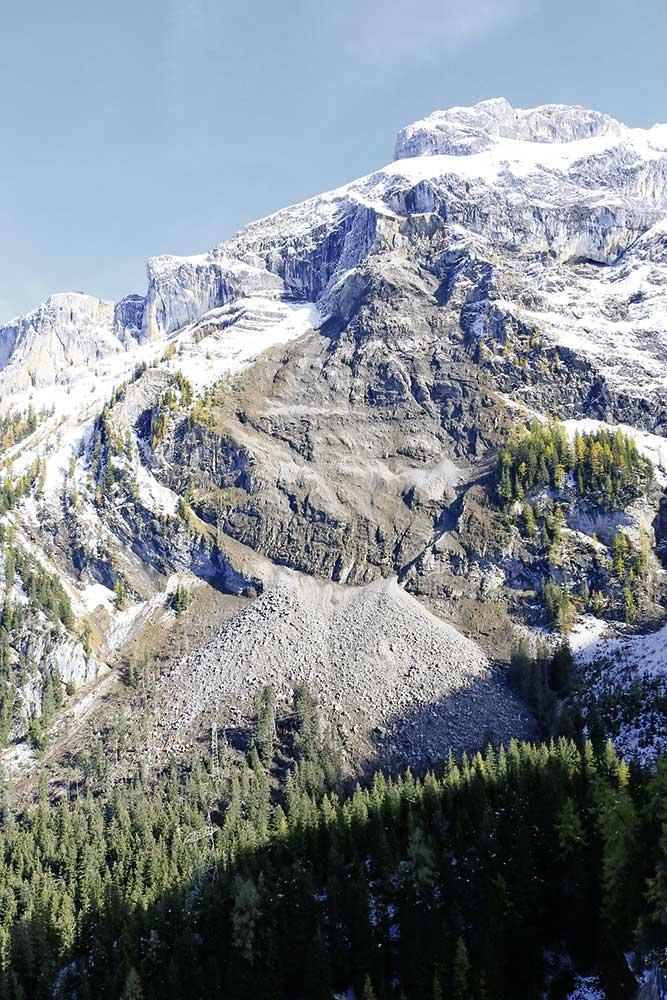Spitzhorn rockfall forces closure of Sanetschpass pathway
24.01.2018 Gstaad LivingOn 23 October, 50’000m3 of rock fell from the west flank of the Spitzhorn. The debris spread across the base of the cliff and down into the forest below all the way to Rotegrabe. The pathways linking Gsteig – Sanetsch and Rotegrabe – Burg – Längmatte were partially blocked by the debris. Since this initial incident, there have been several more reports of falling rock in that area. Local residents have been warned to stay away and the zone around the base of the Spitzhorn, including the Sanetschpass pathway, has been closed.
Regional forest ranger, Arthur Haldi, estimates that approximately 4 hectares of forest were damaged by the
23 October incident. A high voltage power line was also battered. Thankfully, no people or animals were injured by the recent rockslides. Even though the fallen rocks landed in relative proximity to Gsteig, there was no immediate danger to the local inhabitants according to Paul Reichenbach, councilman for Gsteig. The geological structure of the region would in fact prevent further rock fall from affecting any local settlements.
A further incident of rock falling from the west side of the Spitzhorn was reported shortly after the first event. Eyewitnesses in Gsteig reported seeing rocks falling from the Spitzhorn. Authorities were disappointed to hear that despite official warnings of a potentially life-threatening situation and an official closure of the area, individuals have been reported to have entered the danger zone. The local council has made it clear that it cannot accept responsibility for any incident that might occur due to reckless behavior.
“We are dealing with an unpredictable and therefore potentially life-threatening situation. We are therefore asking people to stay away from the area until further notice,” said the Gsteig council in a press release.
The exact cause of the recent rockfall is unknown, explained local authorities. They have, however, excluded thawing permafrost as a cause because of the high altitude of the cliff and since there was no indication of water flowing out of the cliff, they do not think pressurized water was the cause either. Shortly after the recent rockfalls, samples of the debris were taken by helicopter and an examination of the affected area was conducted by a geologist. A report with more conclusive findings about what caused the rocks to fall will be published in due course. At this stage, a likely explanation for the rockfall seems to be general erosion of the rockface.
Falling rock is not an unusual occurrence in this region. In fact, a cloud of dust that signaled rockfall was spotted at the southern flank of the Spitzhorn in September 2016. At the time, an on-site examination of the debris did not reveal any cause for concern: the fallen rocks were no larger than previous ones and the walkways Gsteig – Sanetsch and Längmatte – Burg – Rotegrabe were not affected.
The local council plans to reassess the situation in the spring, once the snow has melted. Only then will it be possible to decide whether the access ban can be lifted.
Anne Christine Kempton / AvS




